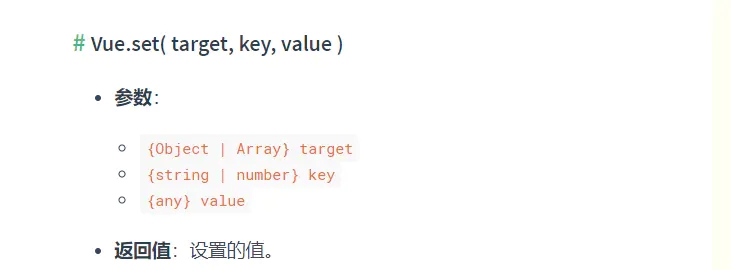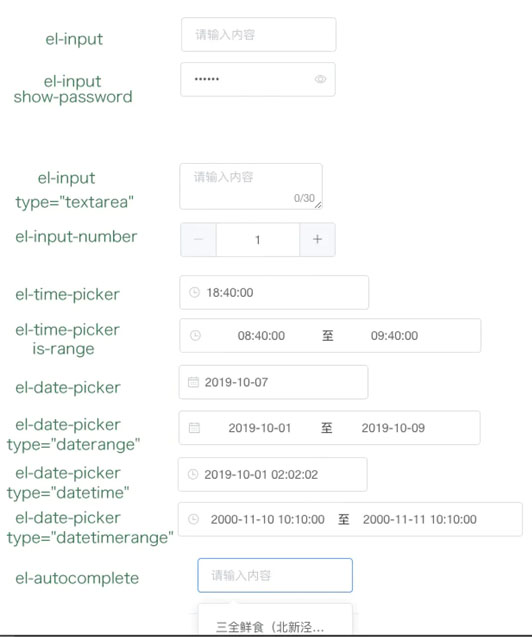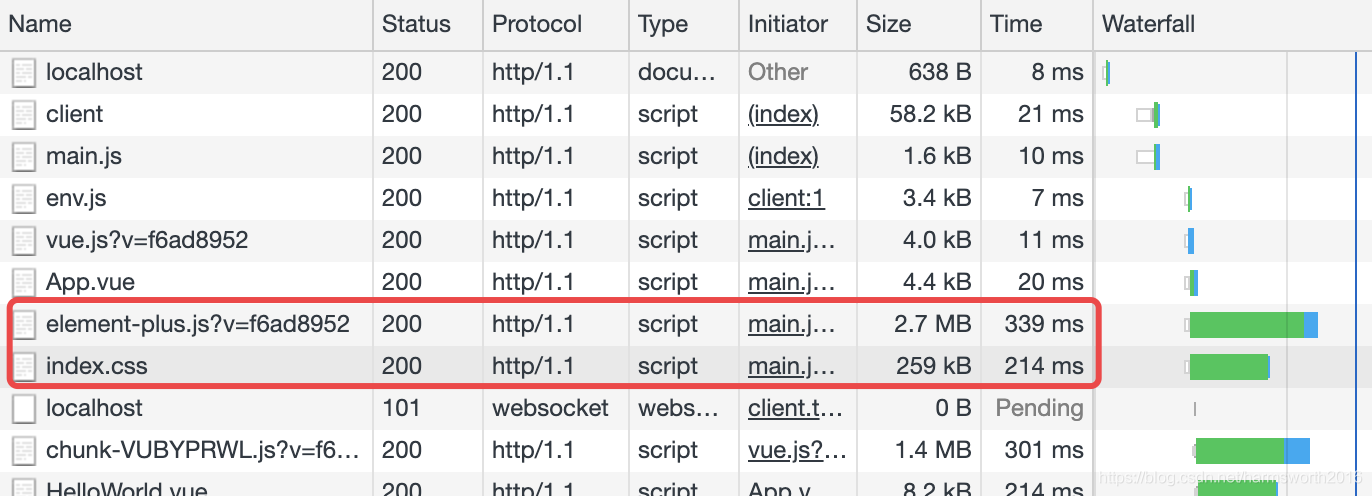在我们使用vue进行开发的过程中,可能会遇到一种情况:当生成vue实例后,当再次给数据赋值时,有时候并不会自动更新到视图上去; 当我们去看vue文档的时候,会发现有这么一句话:如果在实例创建之后添加新的属性到实例上,它不会触发视图更新。 如下代码,给 student对象新增 age 属性
data () {
return {
student: {
name: '',
sex: ''
}
}
}
mounted () { // ——钩子函数,实例挂载之后
this.student.age = 24
}
受 ES5 的限制,Vue.js 不能检测到对象属性的添加或删除。因为 Vue.js 在初始化实例时将属性转为 getter/setter,所以属性必须在 data 对象上才能让 Vue.js 转换它,才能让它是响应的。
正确写法:this.$set(this.data,”key”,value’)
mounted () {
this.$set(this.student,"age", 24)
}
:: Vue 不允许动态添加根级响应式属性。
例如:
const app = new Vue({
data: {
a: 1
}
// render: h => h(Suduko)
}).$mount('#app1')
Vue.set(app.data, 'b', 2)

只可以使用 Vue.set(object, propertyName, value) 方法向嵌套对象添加响应式属性,例如
var vm=new Vue({
el:'#test',
data:{
//data中已经存在info根属性
info:{
name:'小明';
}
}
});
//给info添加一个性别属性
Vue.set(vm.info,'sex','男');
Vue.set()和this.$set()实现原理
我们先来看看Vue.set()的源码:
import { set } from '../observer/index'
...
Vue.set = set
...
再来看看this.$set()的源码:
import { set } from '../observer/index'
...
Vue.prototype.$set = set
...
结果我们发现Vue.set()和this.$set()这两个api的实现原理基本一模一样,都是使用了set函数。set函数是从 ../observer/index 文件中导出的,区别在于Vue.set()是将set函数绑定在Vue构造函数上,this.$set()是将set函数绑定在Vue原型上。
function set (target: Array<any> | Object, key: any, val: any): any {
if (process.env.NODE_ENV !== 'production' &&
(isUndef(target) || isPrimitive(target))
) {
warn(`Cannot set reactive property on undefined, null, or primitive value: ${(target: any)}`)
}
if (Array.isArray(target) && isValidArrayIndex(key)) {
target.length = Math.max(target.length, key)
target.splice(key, 1, val)
return val
}
if (key in target && !(key in Object.prototype)) {
target[key] = val
return val
}
const ob = (target: any).__ob__
if (target._isVue || (ob && ob.vmCount)) {
process.env.NODE_ENV !== 'production' && warn(
'Avoid adding reactive properties to a Vue instance or its root $data ' +
'at runtime - declare it upfront in the data option.'
)
return val
}
if (!ob) {
target[key] = val
return val
}
defineReactive(ob.value, key, val)
ob.dep.notify()
return val
}
我们发现set函数接收三个参数分别为 target、key、val,其中target的值为数组或者对象,这正好和官网给出的调用Vue.set()方法时传入的参数参数对应上。

参考:
vue中遇到的坑 — 变化检测问题(数组相关)
到此这篇关于Vue.set()和this.$set()使用和区别的文章就介绍到这了,更多相关Vue.set()和this.$set()内容请搜索NICE源码以前的文章或继续浏览下面的相关文章希望大家以后多多支持NICE源码!











